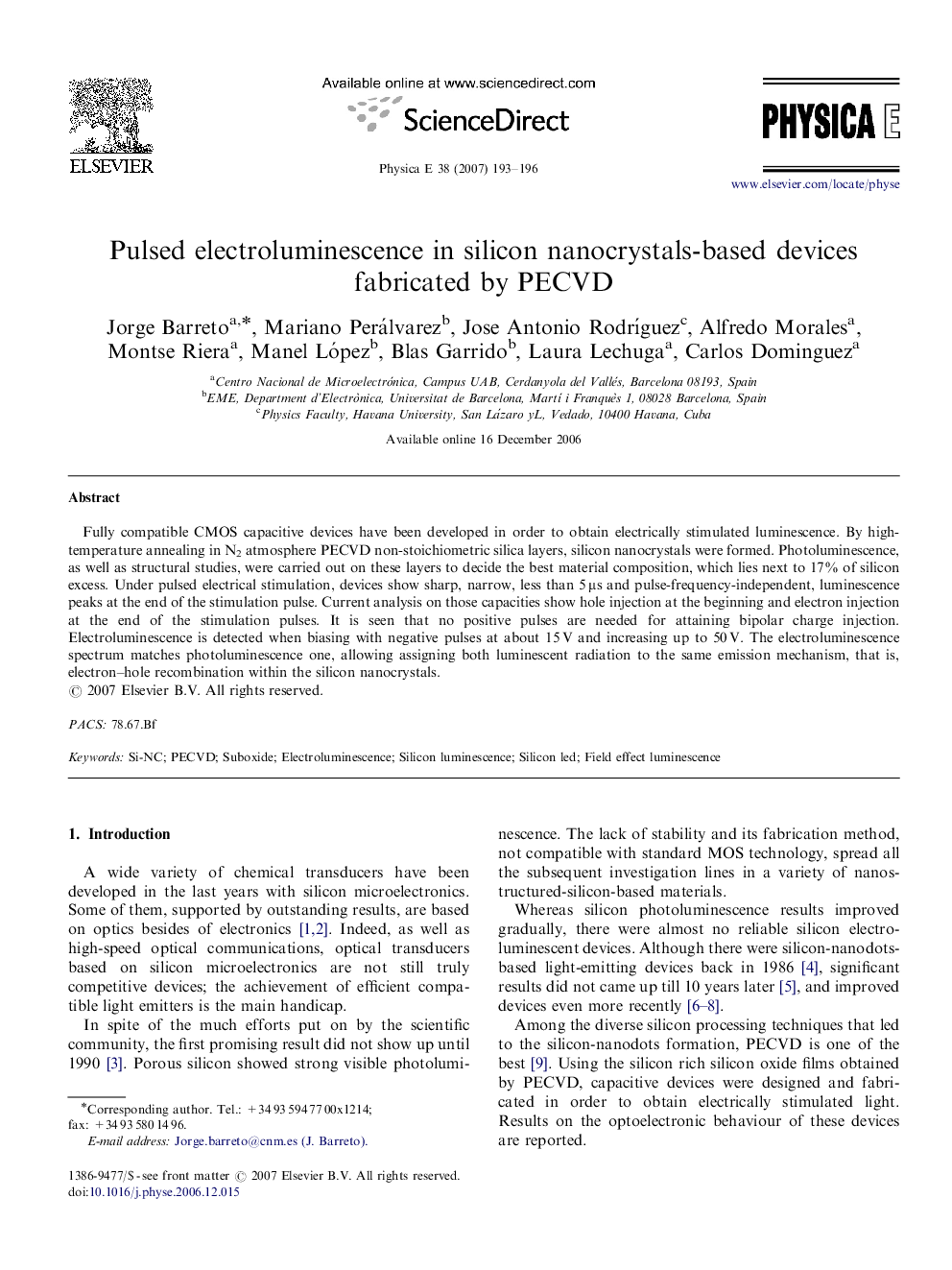| Article ID | Journal | Published Year | Pages | File Type |
|---|---|---|---|---|
| 1547702 | Physica E: Low-dimensional Systems and Nanostructures | 2007 | 4 Pages |
Fully compatible CMOS capacitive devices have been developed in order to obtain electrically stimulated luminescence. By high-temperature annealing in N2 atmosphere PECVD non-stoichiometric silica layers, silicon nanocrystals were formed. Photoluminescence, as well as structural studies, were carried out on these layers to decide the best material composition, which lies next to 17% of silicon excess. Under pulsed electrical stimulation, devices show sharp, narrow, less than 5 μs and pulse-frequency-independent, luminescence peaks at the end of the stimulation pulse. Current analysis on those capacities show hole injection at the beginning and electron injection at the end of the stimulation pulses. It is seen that no positive pulses are needed for attaining bipolar charge injection. Electroluminescence is detected when biasing with negative pulses at about 15 V and increasing up to 50 V. The electroluminescence spectrum matches photoluminescence one, allowing assigning both luminescent radiation to the same emission mechanism, that is, electron–hole recombination within the silicon nanocrystals.
